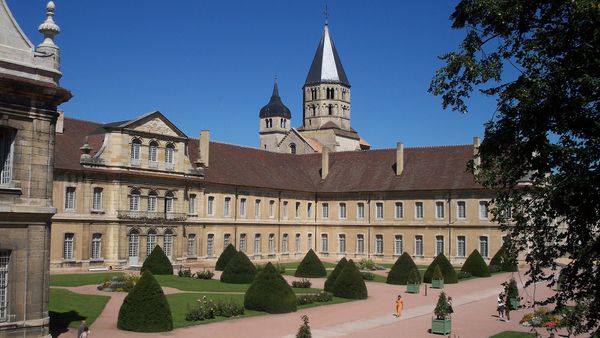
Cluny Abbey (reconstitution after its destruction during the Revolutionary period)
Photo: Juan Seguí Moreno, CC BY-NC-ND 2.0
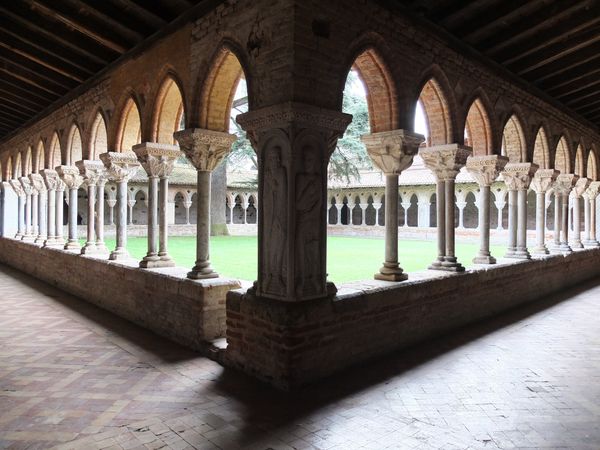
Cloister, Saint Peter’s Abbey, Moissac.
Photo: Margaret Leighton, CC BY-NC 2.0
Not everyone followed these methods for building Romanesque architecture.
There were even two radically different movements.
The order of Cluny
On the one side, the Cluny religious order had big dreams for their buildings! They decorated many of them in rich, luxurious style. The Cluny church that they built is 190 metres long and would remain the largest in Europe for five centuries.
The Cistercian order
On the other side, the Cistercians could not stand decorations and colour. Their motto was soberness and simplicity.

The Cluny religious order loved decadent architecture, whilst the Citeaux order advocated for a plain and simple style.
How do you build a Romanesque church? Here is the method, which would have been adjusted to suit each region.
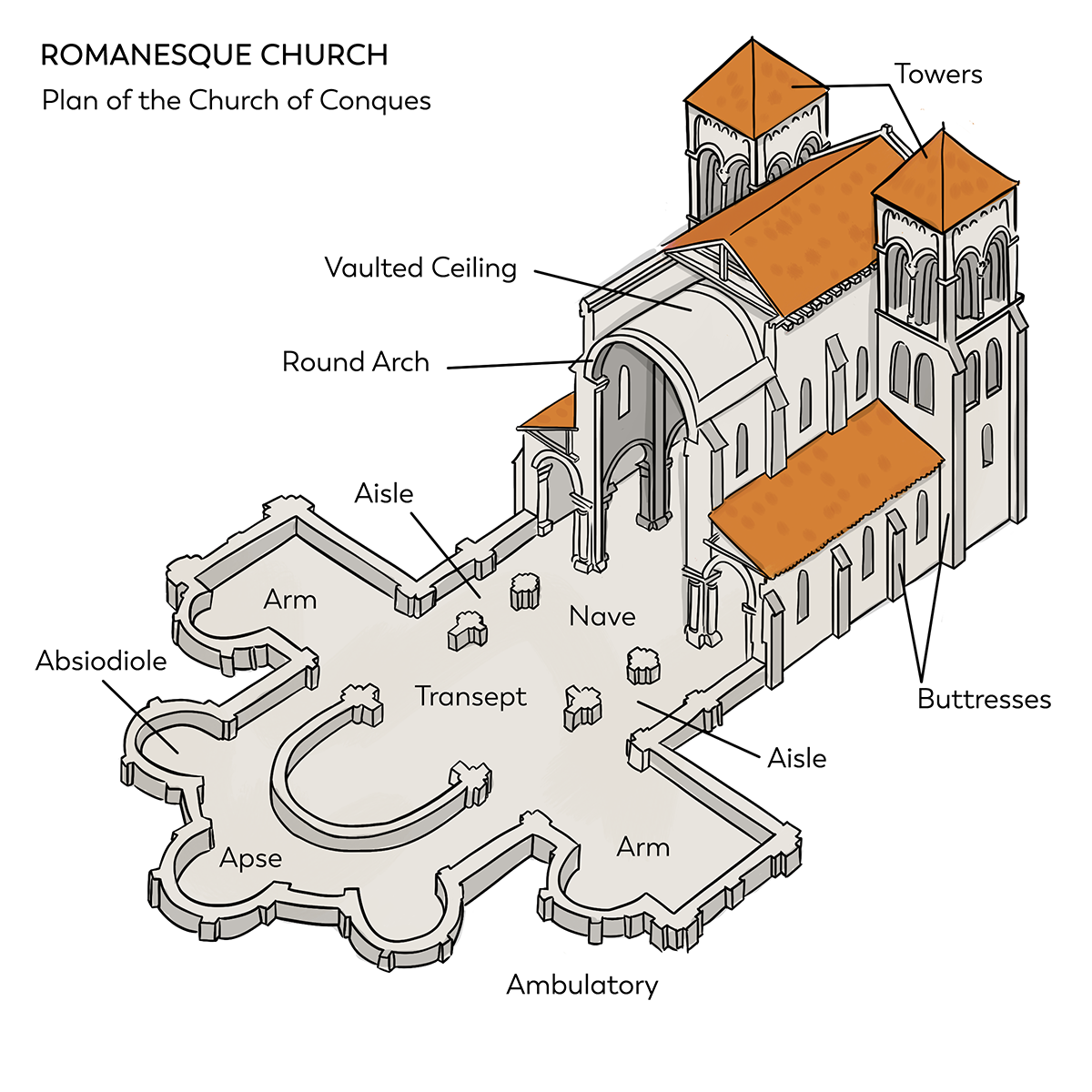
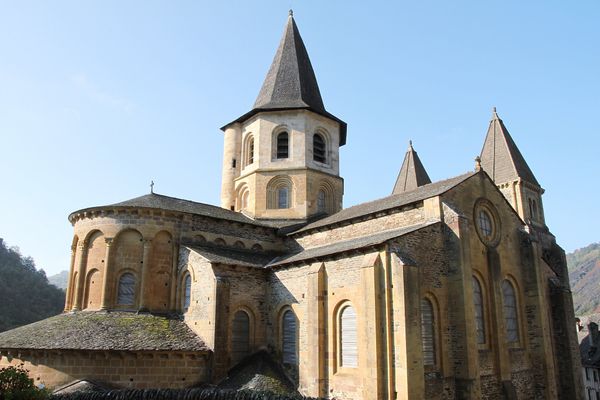
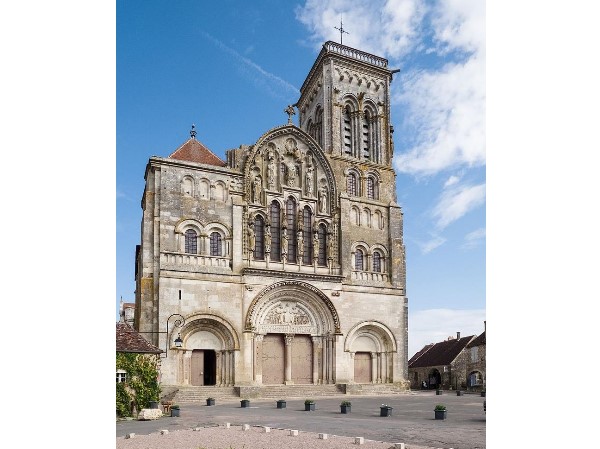
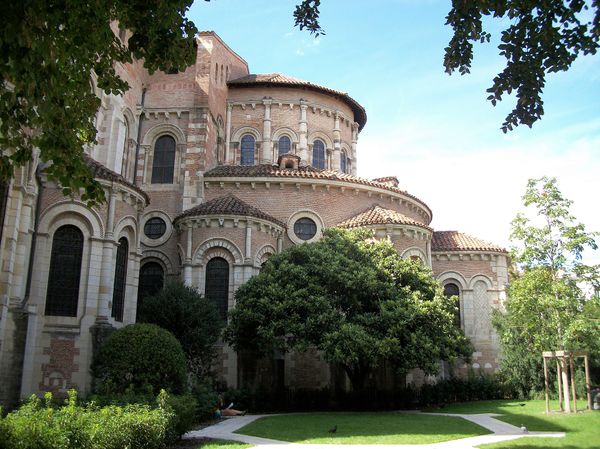

Romanesque architecture has several characteristics: rounded arches, thick walls, narrow windows, painted decorations and sculptures.
Pilgrims would walk many miles to see them or touch them. They hoped to see a miracle!
Architecture therefore had to adjust to this. For example, it was necessary to enlarge buildings to make room for all these new visitors.
This new type of building was spread through:
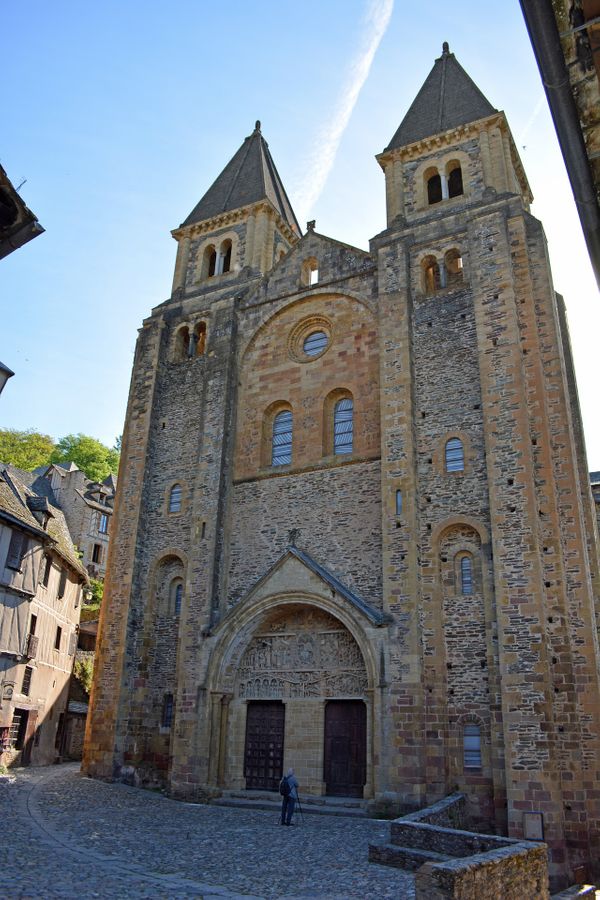

In the 11th and 12th centuries, religious buildings were enlarged to make room for pilgrims who came to see the relics.
Bodily proportions and perspective were sometimes disregarded.
In this painting, King Charles the Bald is bigger than the other characters, even though he is sitting down!
This does not mean that the artists were not gifted. They were just not bothered with realism. For them, the priority was to make what was important stand out at the first glance: in this case, the King.
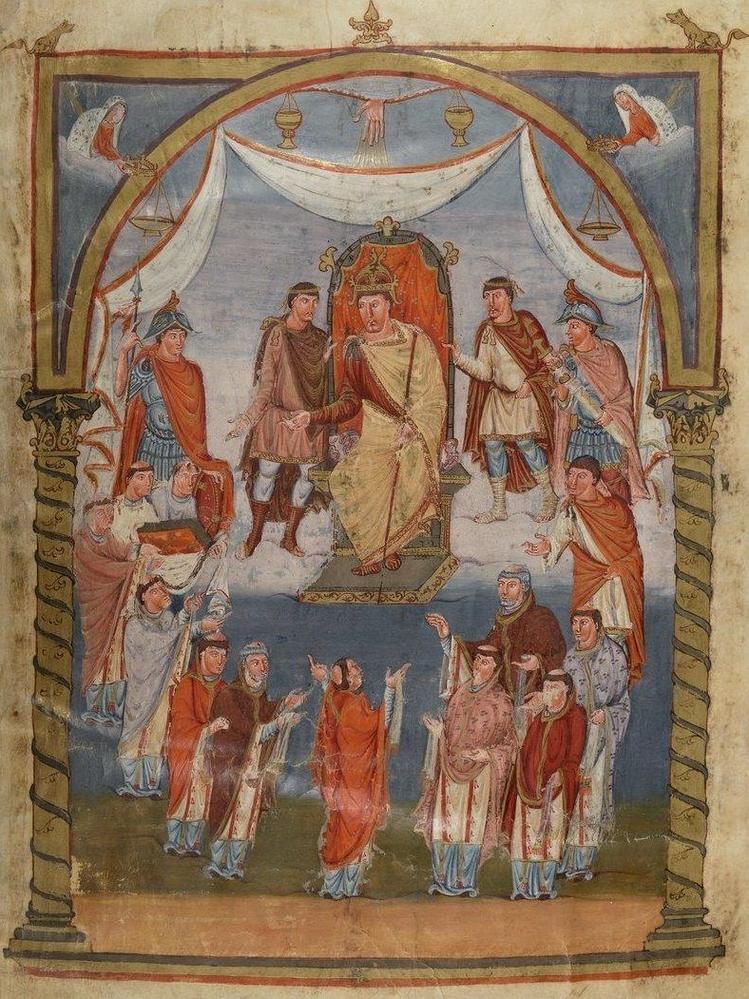

During the Middle Ages, artists did not seek to portray reality (proportions, perspective, etc) but to reveal the importance of their subjects.
To study ancient manuscripts, people first of all needed books. Copies of the manuscripts were made in des scriptoria, excerpts that could be found in monasteries and palaces.
There were no printers at the time! It was mainly monks and nuns who copied manuscripts and decorated the books.
This meant that the manuscripts were objects of luxury:

The Carolingian manuscripts were luxury items that had been copied and richly decorated by hand.
With Charlemagne, there was no question of wiping out the past. He was so obsessed with the Roman Empire that he would have himself buried in a salvaged ancient sarcophagus.
During his reign, he encouraged intellectuals to read ancient manuscripts and learn Latin. Even artists were inspired by Rome for their creations. This is known as the “Carolingian Renaissance”.
Antiquity, therefore, was not left behind. And it would never be forgotten. After all in medieval times, people lived among ancient ruins!

Under Charlemagne, Antiquity, with its manuscripts and art, was fashionable: this is known as the Carolingian Renaissance.
Charlemagne decided to establish his capital in Aix-la-Chapelle. He wanted it to be just as splendid as Rome and Constantinople.
The reputation of his palace quickly spread. It contained a whole series of buildings, including thermal pools for bathing and washing. The Emperor particularly liked swimming in his pool!
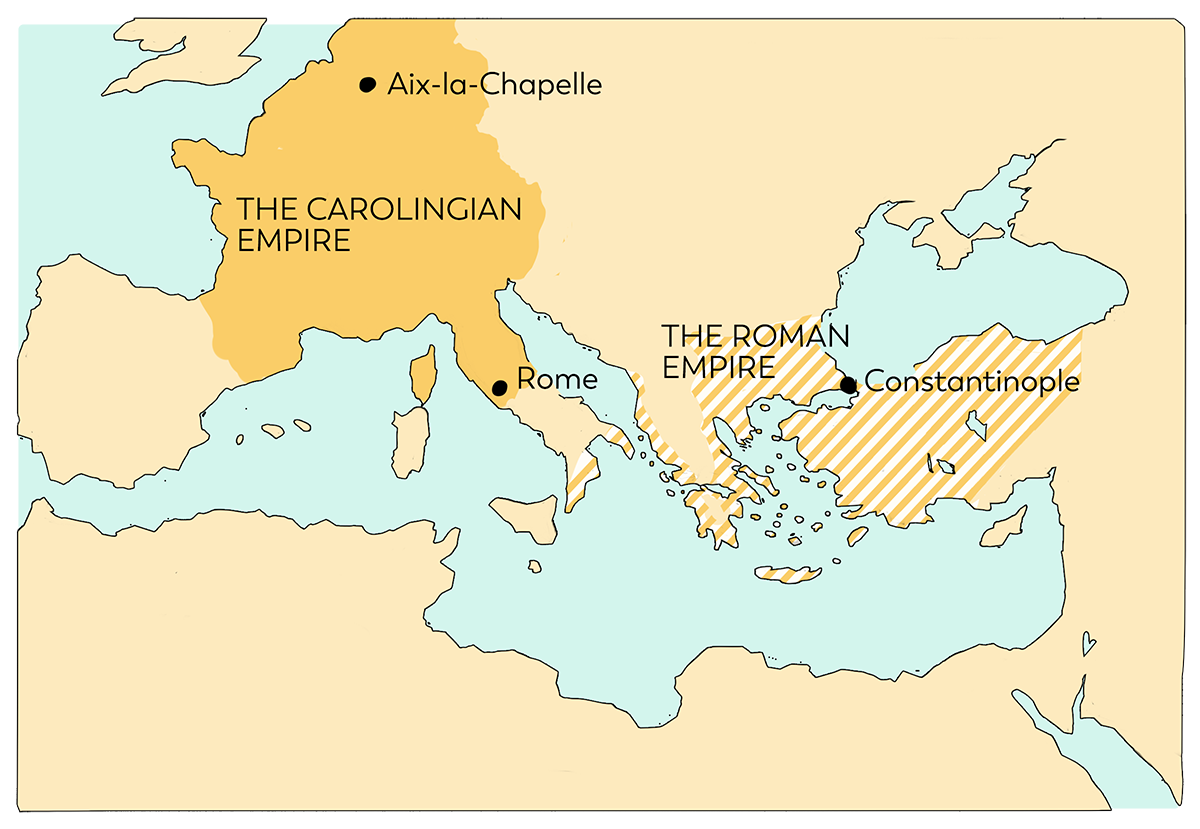

Charlemagne founded Aix-la-Chapelle, the capital of his empire, which was also the symbol of his power.
There was rivalry with the empire of Constantinople (a city also known as Byzantium or, today, as Istanbul). The latter also shared the legacy of the eastern part of the Roman Empire.
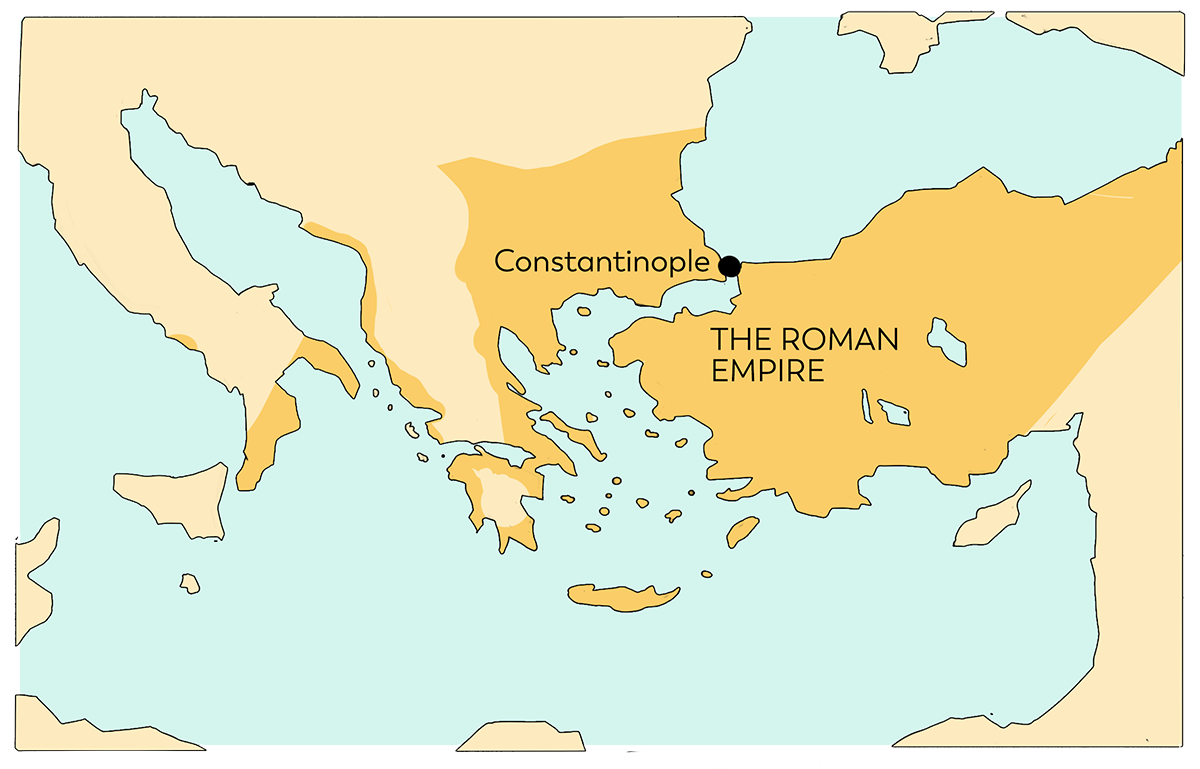

Byzantine art, which we can admire in Constantinople, is particularly luxurious.
The Carolingian era (8th-9th centuries) is one of the great Medieval periods. The arts flourished, and this is thanks to Charlemagne.
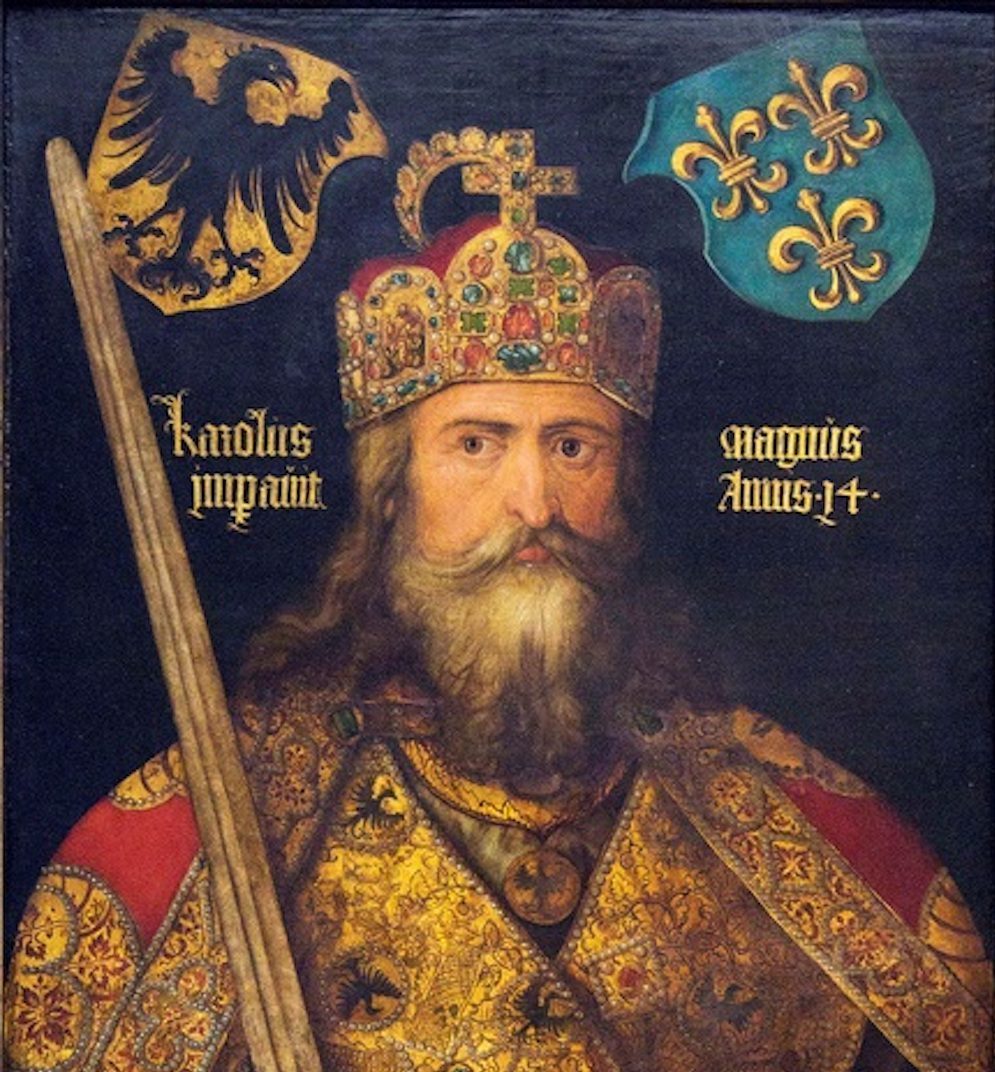
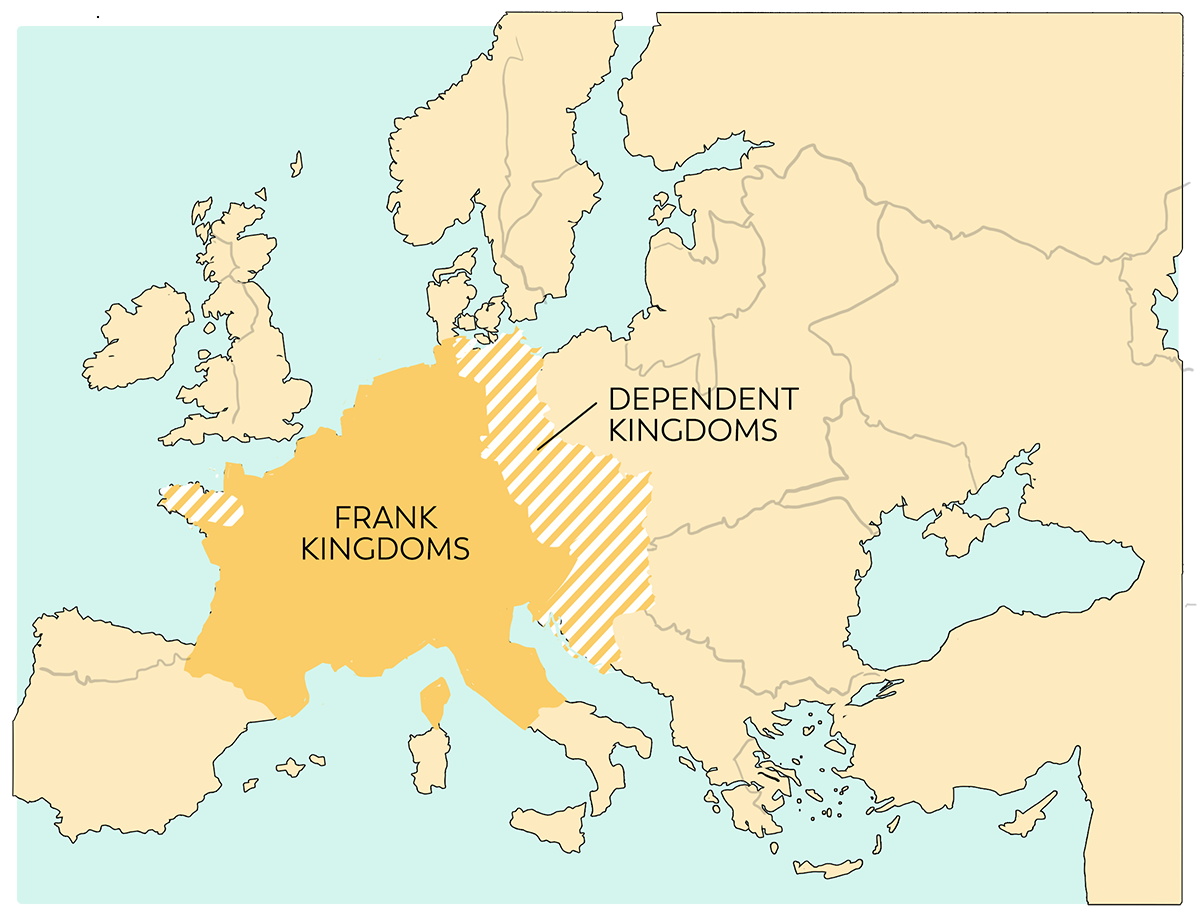

Charlemagne, who reigned over Europe at the beginning of the ninth century, was a great patron of the arts.

"*" indicates required fields